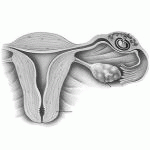Gynaecology
|
22 july 2014 08:52:56 |
| Patterns of psychotropic medicine use in pregnancy in the United States from 2006 to 2011 among women with private insurance (BMC Pregnancy and Childbirth) |
|
Tweet Background:
Psychiatric disorders are equally common during pregnancy as among non-pregnant women, and many of these conditions are treated with psychotropic medicines. Relatively little is known about patterns of use of many these agents during pregnancy, and specifically of how rates may have shifted during the last decade. We aimed to quantify the rate of pregnancy related exposures to categories of psychotropic medicines stratified according to the primary indication for use (antidepressants, antipsychotics, anxiolytics, and psychostimulants), trimester of pregnancy, trends over time and region, and indication for use.
Methods:
We conducted a retrospective cohort study of pregnancies among women in the Truven Health MarketScan database (source population 70 million), which captures person-specific clinical use and includes detailed information on filled prescriptions, hospitalizations and outpatient visits for all privately insured employees and their dependents. We classified psychotropic medicines of interest using ATC level 3 accordingly: antipsychotics (N05A); anxiolytics (N05B); antidepressants (N06A); psychostimulants, agents used for ADHD and cognitive enhancement (N06B). We also examined temporal and regional trends in use.
Results:
We included 343,299 women who had a live birth between Jan 1, 2006 and Dec 31, 2011, of whom 10.3% were dispensed one or more psychotropic medicines during pregnancy. This rate varied from 6% to 15% between states. The rate of use of psychotropic medicines was relatively stable between 2006 and 2011. The most commonly used psychotropic medicines were selective serotonin reuptake inhibitors (5.1%) and benzodiazepine or benzodiazepine-like medicines (3.9%). Among psychotropic users, the most commonly associated psychiatric diagnosis was depression (25.0%), followed by anxiety disorders (24.4%). Approximately 1.6% of women used more than one category of psychotropic medicine in pregnancy, most commonly an antidepressant and an anxiolytic medicine (1.2%).
Conclusions:
Given this relatively high rate of use, the lack of evidence that the most frequently used medications improve birth outcomes and the safety concerns associated with both early and late pregnancy use for many frequently-used medications, there is a need for further study of factors driving psychotropic medication use during pregnancy. |
| 107 viewsCategory: Gynaecology |
 Prostaglandin pathway gene expression in human placenta, amnion and choriodecidua is differentially affected by preterm and term labour and by uterine inflammation (BMC Pregnancy and Childbirth) Prostaglandin pathway gene expression in human placenta, amnion and choriodecidua is differentially affected by preterm and term labour and by uterine inflammation (BMC Pregnancy and Childbirth)Cost-effectiveness of strategies to improve the utilization and provision of maternal and newborn health care in low-income and lower-middle-income countries: a systematic review (BMC Pregnancy and Childbirth) 
|
| blog comments powered by Disqus |
MyJournals.org
The latest issues of all your favorite science journals on one page
The latest issues of all your favorite science journals on one page



